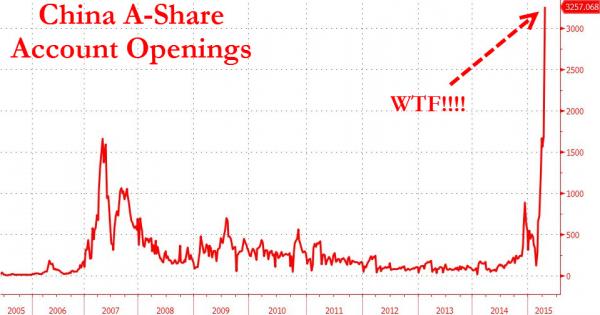Understanding the Investment and Trading Words in Chinese
Not too long ago, you may have seen this photo of a man completely engrossed in the stock market floating around the internet. It’s a spot-on representation of China’s reaction to the stock market, which has taken the economy by storm and shows no signs of slowing down.


Gone are the days when real estate held the crown in the Chinese’ market. Now, all eyes are on the stock market, drawing both seasoned investors and novices alike. Despite its reputation for being chaotic and unpredictable, there are moments that compel people to delve into it with unwavering commitment. With echoes of the 2007 bull market still lingering, a fresh bull market has emerged, sparking further excitement.
Even if investment is not your cup of tea, understanding the dynamics of the stock market can prove to be valuable, especially when engaging in conversations with Chinese friends and colleagues who can’t help but share tales of their gains in this lucrative market. So, let’s set aside grammar and structure momentarily as we commence a crash course in the world of Chinese finance.
To start, you need to know the key term ‘stock,’ which in Chinese is 股票 (gǔ piào). 股 (gǔ) means ‘share,’ and 票 (piào) means ‘ticket.’ In the early days of the stock market, a share represented a paper contract, hence the use of ‘票 (piào)’. A single stock is called 一支股票 (yī zhī gǔ piào), with 支 (zhī) as the measure word.
China has two stock exchanges: the Shanghai Stock Exchange, known as 上海证券交易所 (shàng hǎi zhèng quàn jiāo yì suǒ), and the Shenzhen Stock Exchange, known as 深圳证券交易所 (shēn zhèn zhèng quàn jiāo yì suǒ). The primary indices are the Shanghai Composite Index, 上证综合指数 (shàng zhèng zōng hé zhǐ shù), and the Shenzhen Component Index, 深证成分指数 (shēn zhèng chéng fèn zhǐ shù). Both exchanges operate from Monday to Friday, with trading hours from 9:30 am to 11:30 am and 1 pm to 3 pm.
In the Chinese stock market, there are two types of shares: A-shares and B-shares. A-shares, or A-股(gǔ), are limited to internal investors, meaning you must have a Chinese passport to invest in them. On the other hand, B-shares, or B-股(gǔ), are open to all investors, regardless of nationality. If you’re keen on investing in A-shares but lack a Chinese passport, you can opt for QFII, which allows you to authorize a qualified overseas institution to invest on your behalf. Now, let’s explore some investment terms to boost your vocabulary.
- 涨停(zhǎng tíng) – Limit Up / 跌停(diē tíng) – Limit Down: In the share market, there are limit-up and limit-down levels, both set at 10%. Even if a stock hits these limits, it can still be traded
- 开盘价(kāi pán jià) – The Opening Price / 收盘价(shōu pán jià) – The Closing Price: These terms refer to the price of a stock at the beginning and end of a trading session
- 涨(zhǎng) – Increase / 跌(diē) – Decrease: These indicate whether a stock’s value is rising or falling
- 熊市(xióng shì) – Bear Market / 牛市(niú shì) – Bull Market: These terms describe overall market trends – a bear market indicates declining prices, while a bull market signifies rising prices
- 长线(cháng xiàn) – Long Term / 短线(duǎn xiàn) – Short Term: These terms refer to different investment timeframes
- 上市公司(shàng shì gōng sī) – Public Company: This term denotes a company whose shares are publicly traded on the stock exchange
The good news is that most of these terms have counterparts in English, making translation straightforward. However, there are also unique phenomena in the Chinese stock market, such as color usage in stock charts.

In the Chinese stock market, the color red, 红(hóng), represents stock increases. While most countries use green, 绿(lǜ), for this purpose, China embraces its traditional lucky color. Interestingly, red typically symbolizes stock decreases in other countries. However, in China, this choice sparked some complaints due to cultural associations. The preference for red in the stock market reveals how much Chinese people favor this vibrant hue. Moreover, there’s a special phrase associated with red: 开门红(kāi mén hóng), which translates to ‘the opening red.’ This phrase is used to wish someone or something success right from the start, not only in the stock market but in all situations.
Congratulations! You’ve now acquired some essential phrases and vocabulary to navigate conversations about the Chinese stock market with ease. Whether you are a seasoned player in the stock market or someone who prefers to stay on the sidelines, I extend my heartfelt wishes for a 开门红(kāi mén hóng) – a triumphant and prosperous beginning, not just in your financial ventures, but in all aspects of life.
As the Chinese stock market continues to captivate the nation and intrigue the world, remember that knowledge is power. Until we meet again, happy investing and may the doors of success swing wide open for you! See you next time.





This Post Has 0 Comments